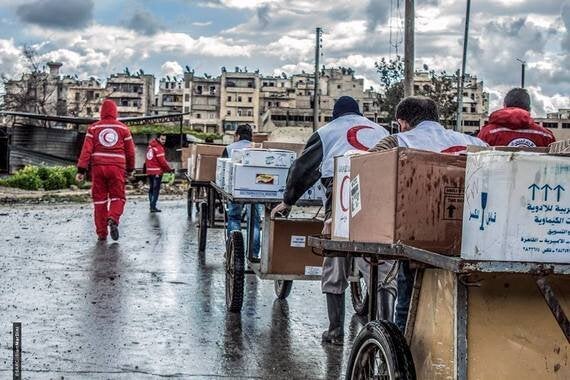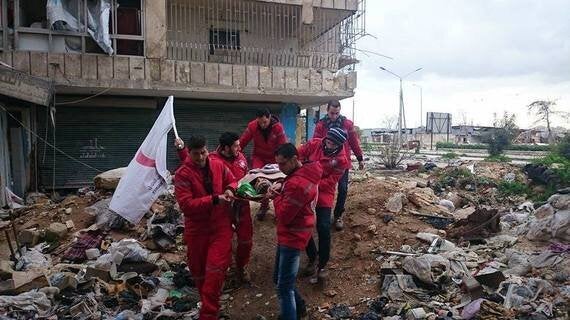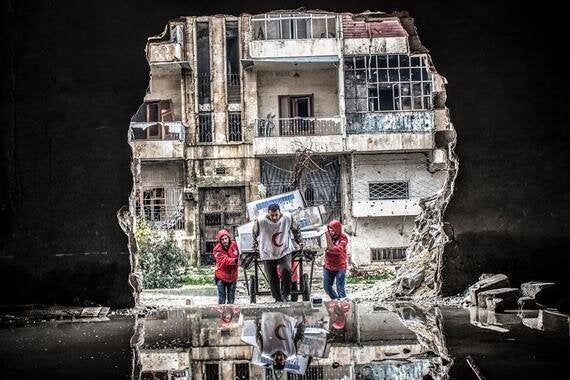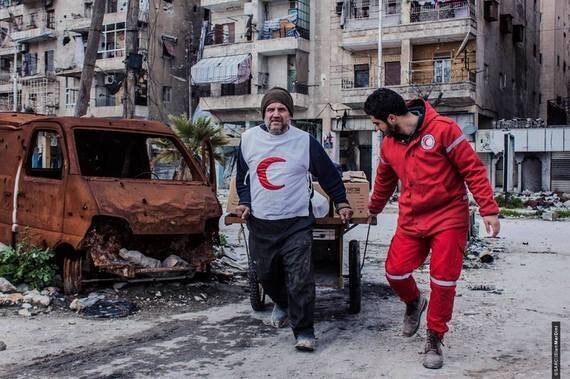Last month the Syrian Arab Red Crescent - a partner of the British Red Cross - reached the Syrian town of Kirnaz for the first time in more than two years.
They arrived to find a community in dire need. After months cut off from the outside world, thousands of people were living without the everyday things you and I take for granted. After helping hundreds of families on that first day, Red Crescent teams returned with eight trucks packed with food, blankets, mattresses, medicines and clothing for 1,200 families. A mobile health unit brought free medicines and treated 480 people in just one day - most of them children.

Photo: Islam Mardini/SARC
Four years into the crisis in Syria, these breakthroughs are still hugely important. But they do not come easily. Syria, when it does make the news, is seen in terms of battle lines and military strategies. When civilians are forced to flee, they go wherever they think they will be safest - but often their choice is misunderstood as a declaration of allegiance to one group or another.

Photo: Islam Mardini/SARC
Geographical location does not matter to us. What matters is that aid be given according to need, regardless of where people are living. The reality is that millions of people are living in areas deemed 'hard-to-reach'. Fighting continues, bringing death and injury to civilians, and making aid deliveries dangerous and sometimes impossible. Red Crescent volunteers come from communities across the country, but some areas have become inaccessible, meaning aid cannot reach local distribution centres. Siege continues to be used as a tactic in the conflict. Humanitarian aid convoys still need to reach Gouta, Duma, Yarmouk and Alwaar and other areas in line with UN Security Council resolutions 2165 and 2139.
Despite a worrying spate of attacks on volunteers and aid workers, the Red Cross and Red Crescent movement is still getting humanitarian aid across front lines, reaching over 3.5million of the 12.2million people who are in need every month and delivering up to 60 percent of UN aid.
All this is possible for one simple reason: we are the International Red Cross and Red Crescent Movement. The red cross and red crescent emblems are `protective symbols, indicating our neutrality and impartiality and our humanitarian mandate to reach those most in need.
And while the emblems should, in principle, according to International Law, provide protection to the impartial Red Cross and Red Crescent humanitarian workers who wear it, still we cannot work in safety. Since the conflict began we have lost 47 aid workers, men and women killed in the line of duty. More have been detained and harassed. Many of these people were volunteers, working to help others even as their own lives were torn apart by the conflict.

Photo: Islam Mardini/SARC
As the crisis enters its fifth year the humanitarian needs remain. The number of people in need has increased from one million in 2012 to 12.2million in 2015. Now, as some neighbouring countries tighten their borders, we will see even more people in need of help within Syria.
Jean Pictet, one of the main architects of the Geneva Conventions, once declared "the greatest enemies to humanitarian assistance may well be selfishness, indifference and discouragement".
We must not allow this crisis to become a victim of these 'enemies of humanity'.

Photo: Islam Mardini/SARC
We must ensure aid agencies are able to respond, with enough aid and access to any community in need. We must demand safety and protection for the volunteers and the civilian communities they serve. Without these steps we cannot bring aid to those most in need of our help. The people of Kirnaz, and millions of others like them, deserve this much at least.

Photo: Islam Mardini/SARC
